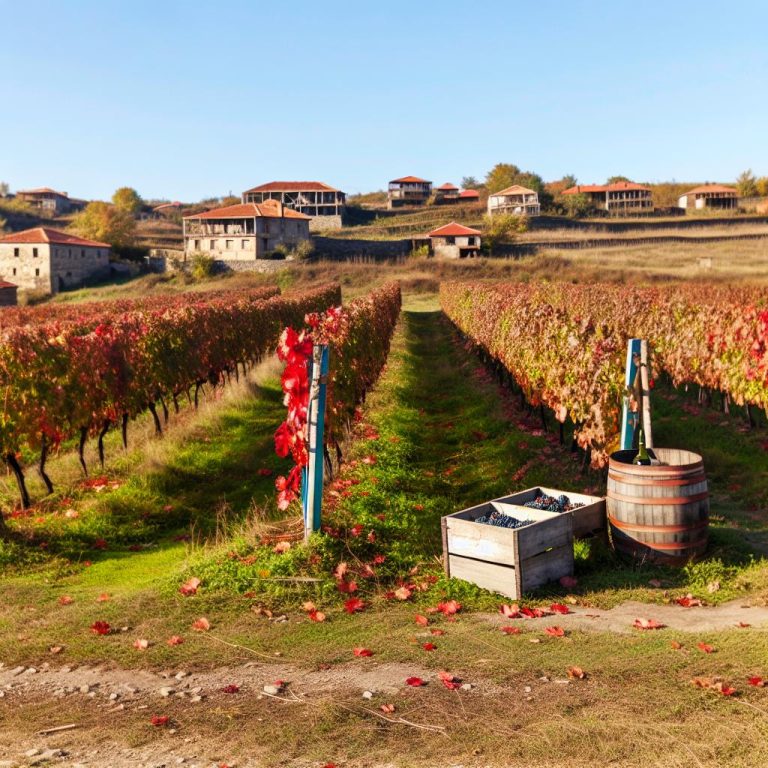Introduction to Sustainability in Georgian Vineyards
Situated in the picturesque Caucasus region, Georgia boasts one of the oldest winemaking traditions in the world, tracing back over 8,000 years. While the methods of production have evolved, the commitment to sustainability remains a cornerstone of Georgian viticulture. Below, we delve into the sustainable practices employed by winemakers in this historically rich region.
Geographical Significance
Georgia’s unique geographical location offers a compelling backdrop for sustainable vineyard practices. The country’s optimal climate conditions and fertile soil contribute naturally to a favorable environment for growing grapes. The diverse topography allows for a wide variety of grape species to thrive without heavy reliance on artificial enhancements or chemical fertilizers. The vineyards in the eastern part of Georgia benefit from a climate that provides just the right amount of sunlight and rainfall, reducing the need for external irrigation systems. This natural abundance helps to maintain the ecological balance of the region, while simultaneously minimizing human-induced environmental impact.
Traditional Winemaking Techniques
One of the central elements of Georgian winemaking is the use of qvevri—large clay vessels that are buried underground and used for fermenting, storing, and aging wine. This ancient technique is a testament to the country’s rich vinicultural heritage. The use of qvevri requires little to no chemical additives, allowing the wine to develop its natural flavors. This method aligns seamlessly with modern sustainability objectives by requiring minimal intervention, promoting a harmonious balance between human activity and natural growth processes. Moreover, the material of the qvevri—clay—regulates temperature naturally, thereby eliminating the need for artificial climate control within cellars, which often consumes significant energy resources.
Organic and Biodynamic Practices
A number of Georgian vineyards have embraced organic and biodynamic principles over recent years. Organic agricultural practices exclude the use of synthetic fertilizers and pesticides. Instead, they focus on natural alternatives that promote soil health and bolster the resilience of vines. By nurturing soil biodiversity, these practices enhance the quality of the grapes and support a more robust ecosystem. Concurrently, biodynamic agriculture takes this a step further by following lunar calendars and lunar phases to dictate when planting and harvesting should occur. This holistic approach encourages winemakers to view the vineyard as a self-sustaining organism. The principles of biodynamics emphasize the importance of closed-loop systems, minimizing external input, and maximizing the use of on-site resources. Additionally, the use of natural fertilizers, like compost, contributes to reducing carbon footprints and maintaining ecological balance.
Water Management
Effective water management is a crucial aspect of running sustainable vineyards. With the increasing risk of droughts linked to climate change, managing water resources has become a priority for Georgian winemakers. Techniques such as drip irrigation are employed to ensure that water reaches the plants directly, minimizing wastage and encouraging efficient water use. Rainwater harvesting is also a common practice, allowing vineyards to capture and store rainwater for later use. This approach not only reduces dependence on local water supplies but also minimizes erosion and runoff. The incorporation of these water management strategies not only helps conserve water but also encourages the development of deeper root systems in the vines, which can better withstand the impacts of climate change.
Community Involvement
Sustainability in Georgian vineyards is not limited to environmental aspects; it also encompasses social considerations like community involvement. The success of sustainable viticulture in Georgia is deeply intertwined with local communities. Many winemakers collaborate with residents to maintain traditional agricultural practices that have been passed down through generations. Such collaborative efforts promote the sharing of indigenous knowledge and practices, ensuring their preservation and continuation. Furthermore, these partnerships foster economic sustainability by creating jobs and income for the local population. By supporting regional economies, these winemakers contribute to the overall prosperity and resilience of the communities they are part of.
Challenges and Future Directions
Despite numerous initiatives, Georgian winemakers face several challenges. Climate change poses a significant threat to traditional agricultural practices due to its potential to disrupt weather patterns crucial for grape production. Furthermore, as the global wine market becomes increasingly competitive, maintaining the balance between meeting demand and adhering to sustainable practices presents a constant challenge. To address these issues, continued investment in research and development is vital. Identifying new grape varieties that are more resilient to climate variability could prove key to maintaining Georgia’s wine legacy. Additionally, both government and international support play a critical role in promoting and advancing sustainable practices. Policies that incentivize environmentally friendly farming methods encourage broader adoption of sustainable techniques in the region.
For further reading on sustainable agricultural practices, explore sources like the Food and Agriculture Organization which provides valuable insights into global agricultural sustainability efforts.
